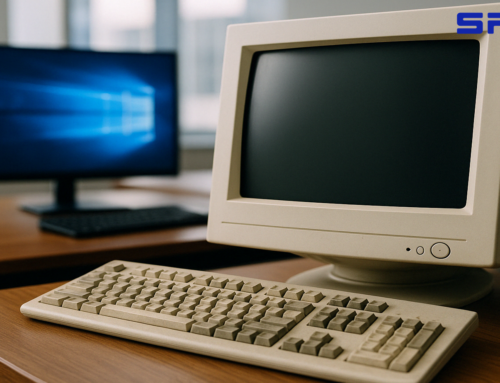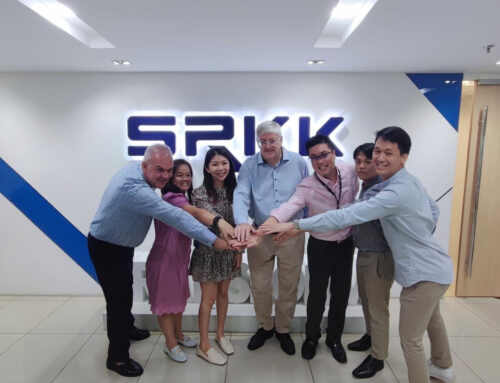
In today’s digital age, businesses heavily rely on technology to boost productivity and streamline operations. However, keeping up with the latest technology can be a significant expense for many companies, leading to challenges in managing technology expenses.
As an enterprise business owner or IT leader, you understand the importance of keeping your business devices up-to-date and functioning at their best. While it may be tempting to hold onto devices for as long as possible to save costs, a two to three-year refresh cycle offers numerous benefits for organizations. Neglecting to refresh devices can place significant strain on IT departments and hinder end-user productivity. Outdated devices can lead to subpar user experiences and pose security risks for the organization.
In this guide, we’ll delve into the clear indications that it’s time for a device refresh in your organization. Not only will we discuss the signs to look out for, but we’ll also examine how upgrading to newer devices can benefit your business in numerous ways. You can also work with a trusted and reliable partner like SRKK Computer to plan your organization’s device refresh cycle to ensure that it can withstand competitive environments.
Devices are more than three years old / Performance are impacting productivity
If your devices are more than three years old, they may lack the processing power, memory, and storage needed to keep up with the demands of modern business. This can result in slow startup times, decreased performance, and reduced employee productivity. Generally, outdated devices can cause frustration and lower employee motivation.
Devices have reached their EOSL (end of service life)
Did you know that if your devices have reached their End-of-Service-Life (EOSL), they can no longer receive support or updates from the manufacturer? Additionally, when an operating system reaches its End-Of-Life status, software developers also stop building apps with support for that OS, which can cause applications like Chrome to eventually stop receiving updates on older platforms. This means that refreshing your devices becomes crucial to ensure that you stay current with the latest software and hardware updates, enabling your business to function at its best.
Not compatible with new software/applications required for business operations
According to Dell Technologies and Forrester’s Device Refresh Cycle survey, half of the respondents (50%) reported that the most challenging aspect of device lifecycle management is having outdated hardware that makes it difficult to integrate new technologies and software. This can also lead to not being able to use new software and applications required for efficient business operations. This can result in compatibility issues, as newer software and applications may be better optimized to work with newer hardware.
Frequent technical issues, including system downtimes and software lags
Today, businesses rely heavily on technology to function efficiently. However, as devices age, technical issues such as system downtimes and software lags become more frequent. This not only causes employee frustration but also the risk of lost business. Therefore, regularly assessing and upgrading your organization’s devices can prevent this and help your business stay competitive.
Increased risk of downtime, data loss, and security breaches
Using outdated devices, such as those running on Windows 7 and 8.1, can pose a security risk to your business. Older devices lack the latest security features, making them more vulnerable to attacks that can result in data breaches, downtime, and potential loss of sensitive information Refreshing devices sooner enables end users with access to the latest and most secure versions of the technology they need.
Difficulty in managing multiple brands and devices in the current environment
Managing multiple brands and devices can be a challenge for enterprise business owners and IT leaders. It may lead to increased maintenance costs and a lack of standardization, making it difficult to implement updates, security patches, and new software. This is especially true in today’s fast-paced business environment. Upgrading to a unified system can help simplify device management, reduce maintenance costs, and ensure that all devices are up-to-date and secure.
Maintenance costs are increasing and exceed the cost of purchasing new ones
As devices age, maintenance costs can increase significantly, exceeding the cost of purchasing new devices. Upgrading your devices can help reduce maintenance costs and ensure that your devices are up-to-date and functioning optimally.
To plan a strategy for device refresh or retirement, it is essential to start by evaluating the existing device inventory in your organization. Regularly assessing and keeping up with the latest technology is crucial for businesses to function efficiently and maintain a competitive edge.
By partnering with an experienced and award-winning Device-as-a-Service provider like SRKK Computer, our team of experts can help organizations build a strategic process around technology refresh and retire.
As a strategic partner with global technology giants such as HP, Lenovo, Dell, and Microsoft, we offer cost-effective options for device procurement, including traditional outright purchases, lease, or trade-in. Contact us HERE today if you want to learn more about how we can help you streamline your device refresh cycle and take the first step towards a refreshed and efficient workplace.
Don’t let inefficient or improper handling of end-of-life equipment cost your company time, money, or brand damage.



